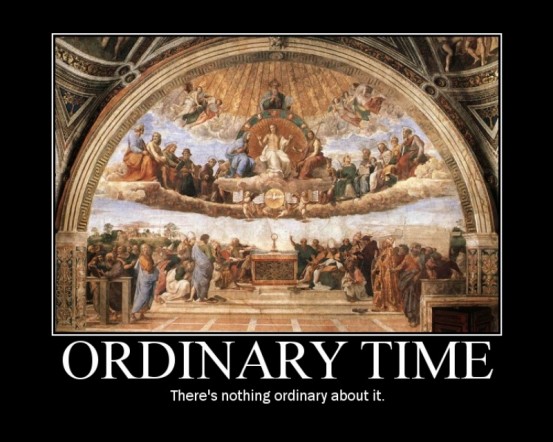
I am a recent convert and have bought a missal for weekday Masses but I sometimes have difficulty knowing which Mass is being said. For example, what does it mean when it says eighth week of Ordinary Time, or year one?
Your question will be of interest to all Catholics, not only to recent converts like you. The calendar is based around five seasons: Advent, Christmas, Lent, Easter and Ordinary Time.
The Church year begins with Advent, which is the preparation for Christmas. It is a season of hope and expectation, both of Christ’s birth in history and of his second coming at the end of time.
Advent begins on the fourth Sunday before Christmas and thus has four Sundays. Its length varies, depending on the day of the week on which Christmas falls, being longest when Christmas falls on a Sunday.
During this season, the colour of the priest’s vestments and other furnishings is purple, or violet, the colour of penance.
The Christmas season begins on December 25 and ends on the Feast of the Baptism of the Lord. It is a season of joy and hence the liturgical colour is white.
During this season we celebrate such important feasts as the Divine Maternity of Mary on January 1, the Holy Family, and Epiphany, which commemorates the adoration of the Christ child by the magi.
While the original date for Epiphany was January 6, the feast is celebrated in most countries on the Sunday closest to January 6, with the Baptism of Christ usually celebrated on the following Sunday.
After the Christmas season comes the first part of what is called Ordinary Time or, in Latin, tempus per annum, time through the year.
Perhaps the translation of Ordinary Time is unfortunate, since no time in the worship of God is ordinary. During this time the Mass readings consider the events of Christ’s life.
There are 34 weeks in Ordinary Time, interrupted by Lent and Easter. Hence, when your missal says “eighth week of Ordinary Time” or “eighth week of the year”, this is what is meant.
Usually, the parish bulletins given out at Mass on Sundays indicate which week we are in, so you will know where to find the Mass in your missal.
During this season the colour is green, the colour of life and growth as seen in plants. During this season, as indeed in all the seasons, the Church also celebrates the feast days of saints, as well as of Our Lord and Our Lady, the angels, etc.
On saints’ days, red is used for the apostles and martyrs, and white for the other saints.
After a few weeks of Ordinary Time comes the season of Lent, in preparation for Easter. Lent begins on Ash Wednesday and has six full weeks in addition to the days between Ash Wednesday and the first Sunday of Lent.
Leaving out the Sundays, which are like weekly celebrations of the joy of Easter, Lent has 40 days, to commemorate Our Lord’s 40 days of prayer and fasting in the desert before beginning his public ministry (cf Mt 4:l-2).
Lent is the primordial season of penance and hence the colour is violet, or purple. During Lent the readings focus on Baptism and penance.
The Easter season begins with the Easter vigil on the eve of Easter Sunday, and it has seven full weeks, ending on Pentecost Sunday, when the Holy Spirit came down on the apostles.
Easter is the most important feast of the year, celebrating Our Lord’s Resurrection and our Redemption. As a season of joy, the colour is white.
After Pentecost Sunday, Ordinary Time resumes until the first Sunday of Advent, when the cycle begins all over again. The last Sunday of Ordinary Time is the feast of Christ the King.
It is important to know that the readings in Mass vary from year to year, following a three-year cycle on Sundays and a two-year cycle on weekdays.
On Sundays, there are three readings, including the Gospel, and all three vary each year for three years.
The Sunday cycles are usually referred to as Years A, B and C. In order to know in which year we are, it is presumed that the cycles began in the year 1AD with Year A, so that all years divisible by three are Year C.
The weekday cycles are known as Years 1 and 2, according to whether they are odd or even numbered years.
The first reading in Mass varies each year following this plan, but the Gospel is the same each year.
At the beginning of Ordinary Time, the Gospel is from Mark, the shortest Gospel. When Mark is finished, passages of Matthew not found in Mark are read, followed by those from Luke. The Gospel of John is used especially in Easter time.
For more, see Fr Flader’s blog at fatherfladerblog.wordpress.com or contact Fr Flader on frjflader@gmail.com.